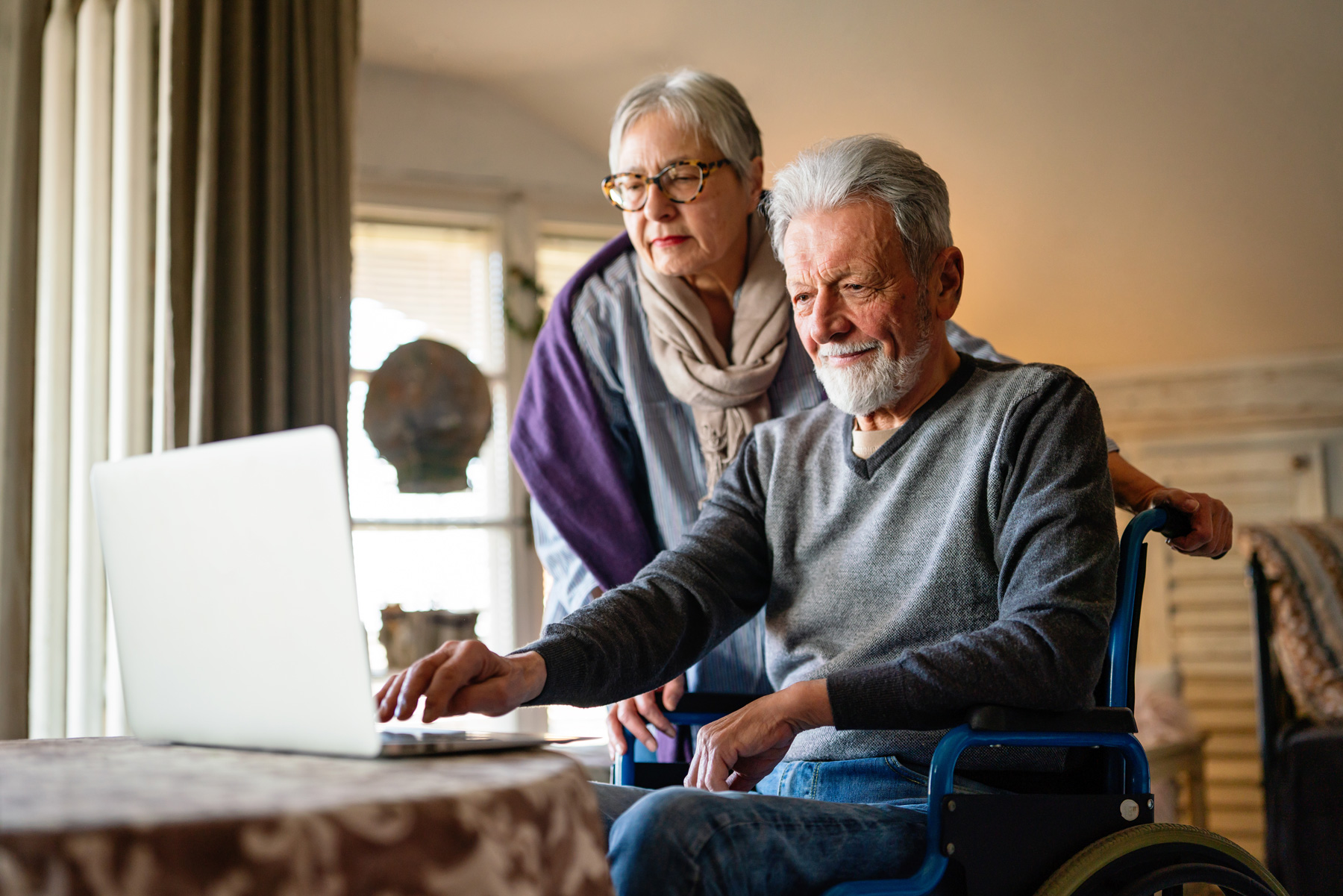Parkinson’s disease is a progressive neurological disorder that affects millions of people worldwide, significantly impacting their quality of life. Despite its challenges, recent advancements in research and treatment are offering new hope to patients and caregivers. Innovative therapies, cutting-edge technologies, and a deeper understanding of the disease are helping to slow its progression and improve daily living for those affected. By staying informed about the latest developments, individuals with Parkinson’s and their families can make empowered decisions for a brighter, more manageable future. Discover the breakthroughs that are transforming Parkinson’s care today.
Revolutionary Advances in Parkinson’s Disease Care: Empowering Patients for a Better Tomorrow

Parkinson’s disease (PD) is a progressive neurological disorder that primarily affects movement, causing tremors, stiffness, and difficulty with balance and coordination. It affects nearly 10 million people globally, with its prevalence increasing as the population ages. Despite the challenges it presents, advancements in research, treatment, and care have brought hope to many living with the condition. This in-depth guide will explore the causes, symptoms, diagnosis, treatment options, and the exciting future of Parkinson’s disease management.
What is Parkinson Disease?
Parkinson’s disease is a neurodegenerative disorder that affects the brain’s ability to produce dopamine—a neurotransmitter essential for coordinating smooth and controlled movements. The loss of dopamine-producing neurons in the substantia nigra region of the brain leads to the hallmark motor symptoms of Parkinson’s, such as tremors, bradykinesia (slowness of movement), rigidity, and postural instability.
PD is classified as a chronic and progressive condition, meaning it worsens over time. The rate of progression varies between individuals, but early detection and treatment are key to managing symptoms and improving quality of life.
Causes of Parkinson’s Disease
The exact cause of Parkinson disease remains unknown, but researchers believe it results from a combination of genetic and environmental factors.
Genetic Factors
About 10-15% of Parkinson’s cases are linked to genetic mutations. Scientists have identified several genes associated with an increased risk of developing the disease, such as the LRRK2, PARK2, PARK7, PINK1, and SNCA genes. While having these mutations can elevate a person’s risk, it doesn’t guarantee they will develop Parkinson’s. For more visit here!
Environmental Factors
Environmental exposures, such as prolonged contact with pesticides, herbicides, heavy metals, or other toxins, have been linked to an increased risk of Parkinson’s. For instance, exposure to a chemical called paraquat, used in some agricultural settings, has been shown to correlate with higher PD risk. Additionally, head injuries and viral infections have been implicated as potential contributors.

Oxidative Stress and Inflammation
Oxidative stress—an imbalance between free radicals and antioxidants in the body—may play a role in the development of Parkinson’s. Oxidative damage to neurons can lead to cell death, particularly in the dopamine-producing neurons of the brain. Similarly, chronic inflammation is thought to contribute to the degeneration of these neurons.
Symptoms of Parkinson’s Disease
Parkinson disease manifests through a wide range of symptoms, which can be broadly divided into motor and non-motor categories. Understanding these symptoms is crucial for early detection and management.
Motor Symptoms
- Tremor: One of the most recognizable signs of Parkinson’s, a tremor typically starts in one hand or arm and is most noticeable when the limb is at rest.
- Bradykinesia: Slowness of movement, making everyday activities such as walking or buttoning a shirt more challenging.
- Rigidity: Muscle stiffness, which can limit the range of motion and cause discomfort or pain.
- Postural Instability: Difficulty with balance and coordination, leading to an increased risk of falls.
- Freezing: A sudden and temporary inability to move, often affecting walking.
Non-Motor Symptoms
- Sleep Disturbances: Many people with Parkinson’s experience insomnia, REM sleep behavior disorder, and excessive daytime sleepiness.
- Depression and Anxiety: Mood changes are common, as the loss of dopamine affects not only motor function but emotional regulation.
- Cognitive Impairment: Memory loss and difficulties with problem-solving or attention can occur in the later stages of the disease.
- Autonomic Dysfunction: This includes issues like constipation, urinary problems, and blood pressure fluctuations due to the nervous system’s inability to regulate automatic functions.
- Loss of Smell: A diminished or complete loss of the sense of smell often appears years before motor symptoms develop.
Diagnosis of Parkinson Disease
There is no definitive test for Parkinson’s disease, making diagnosis a complex process that relies on clinical evaluation. A neurologist will assess symptoms, medical history, and perform a physical exam to rule out other conditions that may mimic PD, such as essential tremor or multiple system atrophy.
Diagnostic Tools
- Neurological Examination: The neurologist will evaluate motor functions, including muscle tone, gait, and reflexes. Bradykinesia, tremor, and rigidity are closely observed.
- Imaging Tests: Though not diagnostic, MRI or CT scans can rule out other brain conditions, such as strokes or tumors, that may cause similar symptoms.
- DaTscan: A specialized imaging test that evaluates dopamine levels in the brain may be used to support the diagnosis.
- Response to Levodopa: Improvement in symptoms after taking levodopa (a dopamine precursor) can help confirm a Parkinson’s diagnosis.
Treatment of Parkinson’s Disease
Although there is currently no cure for Parkinson disease, various treatments are available to manage symptoms and improve the quality of life. Treatment approaches typically involve a combination of medication, therapy, and lifestyle adjustments.
Medications
- Levodopa (L-DOPA): The gold standard for treating Parkinson’s, levodopa is converted into dopamine in the brain, alleviating motor symptoms. It’s often combined with carbidopa to reduce side effects and improve effectiveness.
- Dopamine Agonists: These medications mimic dopamine’s effects in the brain. Common examples include pramipexole, ropinirole, and rotigotine.
- MAO-B Inhibitors: These drugs, such as rasagiline and selegiline, inhibit the breakdown of dopamine in the brain, prolonging its effects.
- COMT Inhibitors: Catechol-O-methyltransferase (COMT) inhibitors, like entacapone, extend the duration of levodopa’s effects by blocking its breakdown.
- Anticholinergics: Used to treat tremors in Parkinson’s, these medications block the neurotransmitter acetylcholine, helping to restore the balance between dopamine and acetylcholine.
- Amantadine: Originally developed as an antiviral drug, amantadine can reduce dyskinesia (involuntary movements) and other motor symptoms.
Surgical Options
For individuals who do not respond well to medication, surgical interventions may be considered.
- Deep Brain Stimulation (DBS): A common surgical treatment for advanced Parkinson’s, DBS involves implanting electrodes in specific areas of the brain to regulate abnormal electrical signals. The electrodes are connected to a pacemaker-like device implanted in the chest, which delivers electrical impulses to control motor symptoms.
- Lesioning Surgery: Techniques like pallidotomy or thalamotomy involve destroying small regions of the brain to reduce symptoms such as tremors or rigidity.
Therapeutic Interventions
- Physical Therapy: Exercises designed to improve flexibility, balance, and strength can help reduce rigidity and improve mobility.
- Occupational Therapy: An occupational therapist helps individuals with Parkinson’s maintain independence by teaching them strategies to overcome challenges in daily activities.
- Speech Therapy: Since Parkinson’s can affect speech and swallowing, speech therapists assist with vocal exercises and swallowing techniques.
Lifestyle Modifications
- Exercise: Regular physical activity has been shown to slow the progression of motor symptoms and improve overall well-being. Activities like walking, swimming, yoga, and tai chi are beneficial for balance, strength, and flexibility.
- Diet: A balanced diet rich in antioxidants, fiber, and omega-3 fatty acids can support brain health and reduce symptoms like constipation. Drinking plenty of water and avoiding processed foods are also recommended.
- Mental Health Support: Counseling and support groups can help individuals and families cope with the emotional toll of Parkinson’s, reducing feelings of isolation and depression.
Emerging Advances in Parkinson’s Research
While there is currently no cure for Parkinson disease, ongoing research is bringing the medical community closer to more effective treatments and, potentially, a cure. Several promising areas of research are worth exploring:
1. Gene Therapy
Researchers are exploring gene therapy as a way to modify or replace defective genes associated with Parkinson’s. By targeting specific genetic mutations, gene therapy could prevent or slow the degeneration of dopamine-producing neurons.
2. Stem Cell Therapy
Stem cell therapy involves using stem cells to replace damaged neurons in the brain. While still in the experimental stage, early studies show promise in restoring dopamine levels and improving motor function in animal models of Parkinson’s.
3. Neuroprotective Treatments
Scientists are searching for treatments that can protect dopamine-producing neurons from further degeneration. Neuroprotective therapies would ideally halt or slow the progression of the disease, offering hope to those in the early stages of Parkinson’s.
4. Personalized Medicine
Advances in genetic research and biomarker identification are paving the way for personalized medicine in Parkinson’s care. By understanding each patient’s unique genetic and molecular profile, doctors can tailor treatments to the individual, potentially improving outcomes.
5. Immunotherapy
Recent studies suggest that the immune system plays a role in Parkinson disease progression. Immunotherapies that target specific inflammatory pathways in the brain could offer new avenues for treatment by reducing neuron-damaging inflammation.
Living with Parkinson’s Disease
While Parkinson’s disease presents significant challenges, many individuals with PD continue to lead fulfilling lives with the right treatment, support, and lifestyle adjustments. Maintaining physical and mental activity, staying informed about treatment options, and connecting with support networks are essential steps for navigating life with Parkinson’s.
Support Systems
- Support Groups: Parkinson’s support groups provide a platform for individuals and caregivers to share experiences, offer emotional support, and exchange practical advice. Many organizations, such as the Parkinson’s Foundation, offer resources for finding local support groups or participating in virtual meetings.
- Caregiver Support: Caregivers play a vital role in managing Parkinson’s, often providing both physical and emotional support. Caregivers should prioritize self-care and seek assistance from healthcare professionals or support networks to avoid burnout.
Resources for Parkinson’s Patients
Numerous organizations provide educational resources, support services, and advocacy for people with Parkinson’s disease, including:
- The Michael J. Fox Foundation for Parkinson’s Research
- The Parkinson’s Foundation
- Parkinson’s UK
Conclusion
Parkinson’s disease remains a complex and challenging condition, but with continued advancements in research and treatment, the outlook is brighter than ever. Early diagnosis, effective treatment, and lifestyle adjustments can help individuals with Parkinson’s lead fulfilling lives while managing their symptoms. As research continues to unravel the mysteries of Parkinson’s, new therapies and treatments on the horizon promise to revolutionize the way we understand and treat this disease. Staying informed and proactive in your care journey can make all the difference, offering hope for a future where Parkinson’s can be better managed—and, one day, cured.



